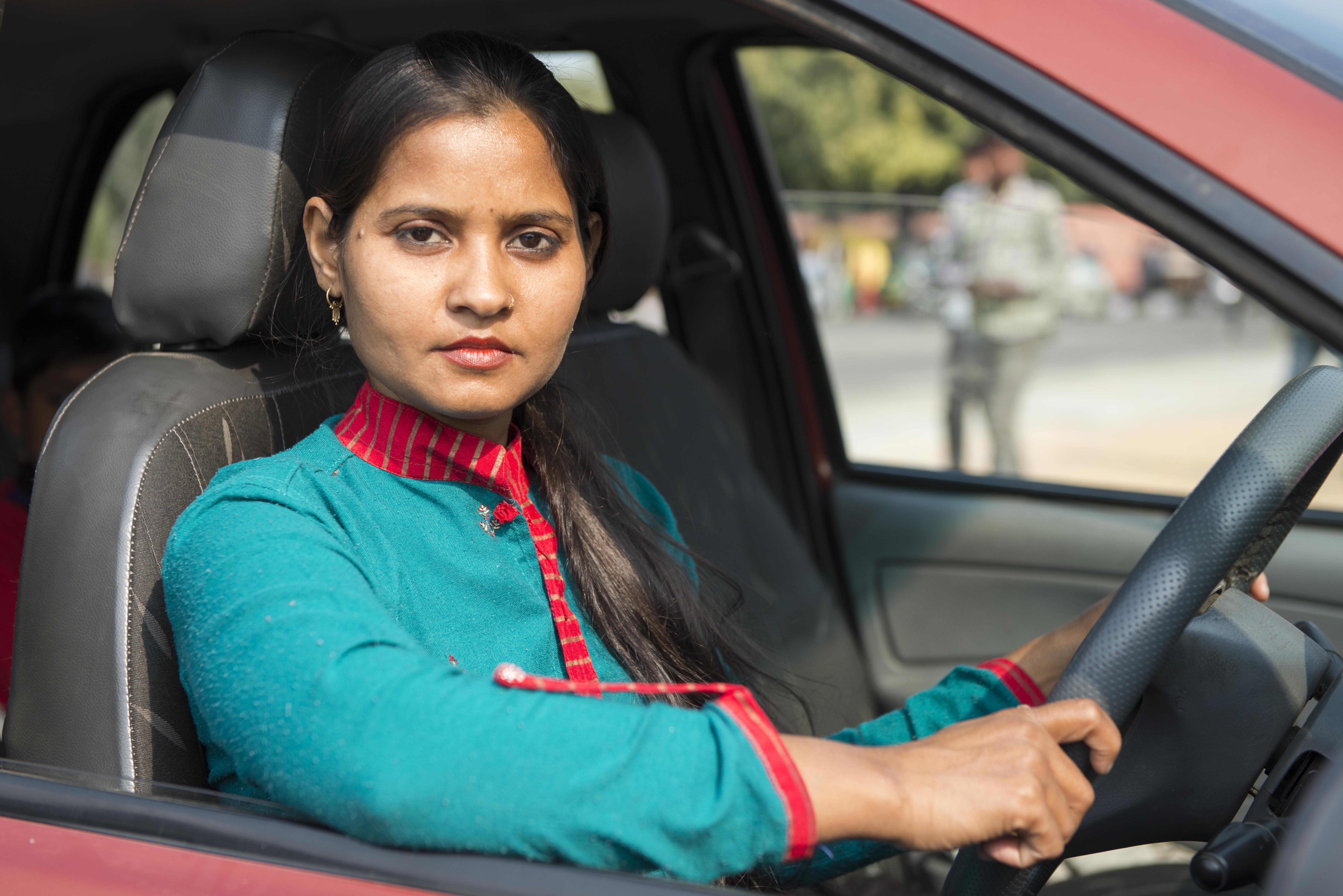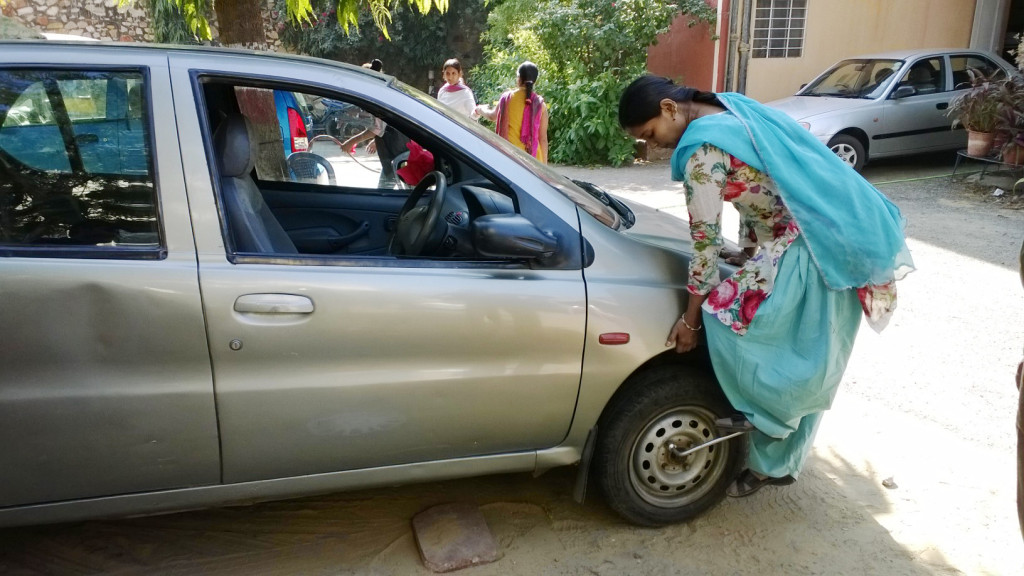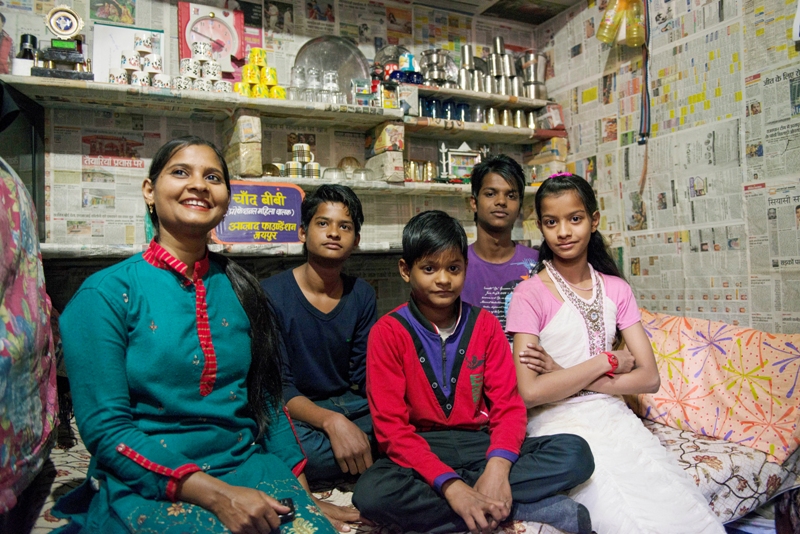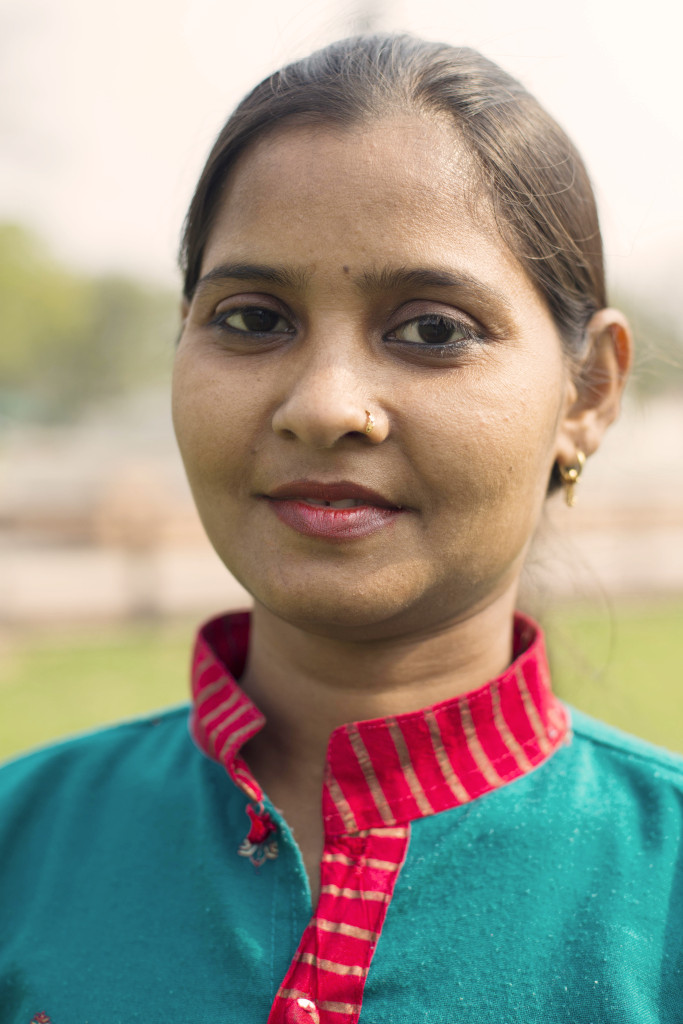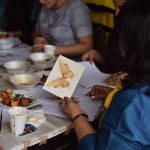Driving empowerment
I first came across Sanam when she was changing a car tyre under a tree somewhere around the Minto Bridge, New Delhi area. Closer scrutiny and some questions later, I discovered that she is a professionally employed female chauffeur with Sakha.
She leaves her Jehangirpuri home at 6am to be on time to drop her employer, a teacher, and her children to school. She waits at the school till afternoon, drops them back home, runs some errands if required and is back home by about 5pm.
Sanam is one of the many drivers trained painstakingly by the Azad Foundation. A pioneer in the field, the NGO was founded by its Executive Director, Meenu Vadera, in 2008 when the concept of a female driver was unheard of. She called it the ‘Women on Wheels’ programme.
“The idea was to empower marginalised women living in the bastis (slums) and offer them a non-traditional option for employment hitherto looked upon as a man’s domain. In this case it was driving. The mission was to enable them to become self-sustaining professionals and allow them to earn a livelihood with dignity. We also wanted to change the perception of society towards these women and find greater acceptance for them,” says Vadera.
From the very beginning, it was clear that Azad would not just churn out women drivers but empowered women who would be able to stand up for their rights, take decisions in trying circumstances and not tolerate domestic violence. So, employing a two-pronged strategy, it was decided that Azad would be the non-profit organisation, while its placement cell, Sakha Consulting Wings would be for profit.
Today, Azad boasts of more than 40 chauffeurs in private placements and has 14 commercial drivers who drive Sakha cabs. Girls like Sufina, Veena and Malti are employed in Hyundai and Nissan showrooms. V Sarita, who has recently been employed by Delhi Transport Corporation as its first woman driver, is among its most visible faces.
A classic case is that of Chand in Jaipur (where Azad and Sakha have a full fledged office), a conservative Muslim woman in a veil. Left to fend for herself and her four children after her husband’s death, she started teaching Urdu to the neighbourhood children. Then one day, she came across the Azad mobilisation team and took up the challenge of learning how to drive. She would come for her training sessions in a burqa and change in the washroom. Today, oozing confidence, she is a trainer in the same academy where she was trained. “From being referred to as someone’s wife, I am now known as Chand the driver,” she says.
The Azad learning journey culminating at Sakha is full of milestones. The battle begins when a girl steps out of her home, fighting family pressure and gender bias – whether she is married or not. She steps into the Azad fold with the support of mobilisers and goes through each training module one by one. Her training begins with obtaining a learner’s licence and thereafter she goes from strength to strength by undertaking gender training, self-defence and communication skills classes.
Along the way she overcomes her fears, inhibitions and complexes. Her path is riddled with hurdles and obstacles. She falls and rises countless times to achieve her goal. It is as much a battle for her as for the Azad mobilisers who walk every step of the way with her.
The concept of women drivers has now become a market force to contend with. After the pioneering efforts of Azad Foundation, many players have stepped into the field, more so in cities like Delhi, where the safety of women is an issue.
That in itself is like a mission accomplished for Azad. Every girl who has gone through the Azad learning journey is not just any female chauffeur. As Vadera says, “The transformation during the course is so significant. You can see it in their body language, in their speech and their ability to negotiate. I think it’s partly because they step into a very different world. Learning to drive is like learning to swim or ride a bicycle: once you get over the initial hesitation, it makes you feel powerful.”

